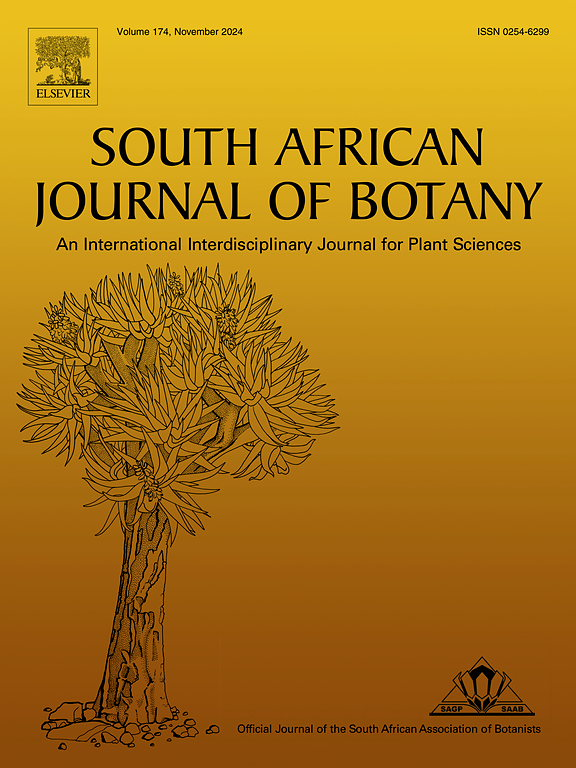Micropropagation of Euphorbia milii Des Moul. with bioguided preliminary phytochemical studies of its bioactive constituents
IF 2.7
3区 生物学
Q2 PLANT SCIENCES
引用次数: 0
Abstract
Euphorbia milii Des Moul. is a slow-growing branching horticulture plant commonly used in large quantities in landscaping streets and gardens; it has also been traditionally used for various medicinal purposes. So, there is an urgent need to design a micropropagation method for the production of a large number of healthy plants. In the present study, shooting establishment, rooting behavior, acclimatization, and biochemical constituents of E. milii were examined. Shoot tip and axillary bud free contamination were sterilized and cultured on Murashige and Skoog (MS) medium fortified with 0.2 mg/L naphthalene acetic acid (NAA) to give the best bud sprouting percentage (86.67 %) and bud length (0.73 cm). The adding of 1.0 mg/L benzyl aminopurine (BAP) with 0.2 mg/L NAA recorded the longest shootlet length (1.5 cm), while different strengths of MS medium with 1.0 g/L activated charcoal produced the best results for shootlet length (2.90 cm), leaf number/shootlet (4.33), root number/shootlet (3.67), and root length (5.70 cm). 100 % survival rate of acclimatized plantlets on peat and sand (1:1 v/v) resulted in maximum plantlet height, leaf number/plantlet, root number/plantlet, and root length. The aqueous methanol extracts of shootlet cultures on MS medium fortified with 2.0 mg/L kinetin (Kin) and 0.2 mg/L NAA recorded the highest amount of total polyphenol, total antioxidant capacity, iron-reducing power, 1,1-Diphenyl-2-picryl-hydrazyl (DPPH), 2,2′-azinobis-(3-ethylbenzothiazoline-6-sulfonic acid) (ABTS), anti-diabetic activity, and anti-inflammatory activity. On the other hand, anti-Alzheimer activity increased in the aqueous methanol extracts of shootlet culture on medium-free hormone (control and medium containing 1.0 mg/L Isopentenyl adenine +0.2 mg/L NAA. The fatty matter fraction of the most bioactive culture on a medium containing 2.0 mg/L Kin + 0.2 mg/L NAA was subjected to GC-FID, which revealed the identification of 16 compounds with palmitic acid as the predominant constituent in the extract, with an area percentage of 67.34 %. Similarly, HPLC analysis of the defatted fraction detected and quantified 13 phenolic compounds, with a major occurrence of gallic acid (6257.84 µg/g). The current research provides a successful method for in vitro propagation of E. milii and the first investigation of the phytochemical analysis with in vitro biological evaluation of the cultures.

求助全文
约1分钟内获得全文
求助全文
来源期刊

South African Journal of Botany
生物-植物科学
CiteScore
5.20
自引率
9.70%
发文量
709
审稿时长
61 days
期刊介绍:
The South African Journal of Botany publishes original papers that deal with the classification, biodiversity, morphology, physiology, molecular biology, ecology, biotechnology, ethnobotany and other botanically related aspects of species that are of importance to southern Africa. Manuscripts dealing with significant new findings on other species of the world and general botanical principles will also be considered and are encouraged.
 求助内容:
求助内容: 应助结果提醒方式:
应助结果提醒方式:


